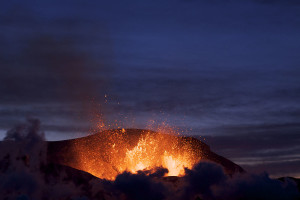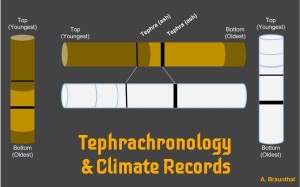
CC 3.0 Eyjafjallajökull Eruption
The Icelandic Eyjafjallajökull volcano, lying dormant for two hundred years, profusely puffed like a chain-smoker in April 2010, gifting northern Europe with prolific yields of ashy air. In ironic imitation, passengers at Heathrow erupted with impatience over cancelled flights and altered plans. The customer service solaced with every complaint because they could blame the delays on mother earth instead of incompetence.
Meanwhile, the people of Iceland breathed with caution, and hoped that the plumes of smoke wouldn’t make them ill.
As you will soon realize, this story will not expound the social and economic implications of a volcanic eruption. Likewise, it will not cover the breathing airway disease associated with inhaling fine ash, which forms the longest word in the English dictionary: Pneumonoultramicroscopicsilicovolcanoconiosis. I dare you to pronounce it.
Rather, this story aims to give you a breath of fresh air, as it uncovers the work of folks who probably had an entirely different reaction to that whole eruption situation. They shared geeky grins at the prospect of a new data point in their records. I’m talking about earth scientists.
Among many groups within the field, you have one cluster called Tephrachronologists, volcano geeks who date eruptions, and another cluster called paleoclimatologists, climate geeks who reconstruct past climates. You will learn how the volcano geeks form a chronological framework for the climate geeks to improve the accuracy of dates in a marine climate record.
Let’s begin with the chronological framework that the volcano geeks produce.
Climatic conditions vary all over the planet and likewise vary over time at one given location. These distinct conditions drive every single eruption to produce volcanic ash particles with unique characteristics and chemical composition. These unique particles then serve as a ‘fingerprint’, which reflect the geography, topography, and climatic conditions of a particular eruption.
During and after each eruption, i.e. those over geologic time, winds transport the particles and scatter them regionally. These particles settle in the ocean, on glaciers, and on land. As these settings continue to build layers, the ash incorporates into the layer close to the time when it settled.
Then the volcano geeks can recover these ash layers from cores, tubes of continuous ice or sediment layers. From there, they can match an ash fingerprint to a year through radiocarbon dating of surrounding carbon material and say: an eruption happened at a particular location on a particular year with particular conditions.
The compilation of all these findings is a chronology of volcanic events, which provides a suitable framework for the climate geeks who need to constrain the dates of their record.
Let’s now add the climate geeks who aim to reconstruct climates on an accurate time scale.
The Ice2Ice project aims to connect the climate records of marine sediment cores and ice cores from eastern Greenland to observe possible connections between sea ice and Greenland Ice Sheet melting.
Our marine sediment cores, reflect detailed chemical and physical shifts between sediment layers, to exhibit some of these regional and hemispheric climate changes. We measure specifically temperature, salinity, and sea ice cover signals.
Due to radiocarbon uncertainties and mixing perturbation, age uncertainty can be common in marine sediment studies. With uncertainty, it is more difficult to match the ice core climate records to our marine sediment cores.
In Ice2Ice, magnetic susceptibility (MS) measurements serve as a preliminary method for creating this accurate age model. We compare our core’s MS to cores from other studies that used similar locations and that have depth ages. With this, we match up a few distinct peaks and approximate some dates for our core.
We also use radiocarbon dates to layers that have carbon-containing microfossil shells.
At this point the world of volcano geeks and climate geeks merge.
Some climate geeks find ash grains in layers of glacial ice and others in marine sediment. They both determine the fingerprint of the ash grains via the volcano geek eruption catalog. If grains from an ice core layer and sediment layer have the same fingerprint, then they originate from the same eruption.

The ice cores have countable layers and years, which allows us to assign particular years to ash layers in the sediment. With accurate years in the sediment and ice, the climate records are more accurately comparable and properly synchronized.
So there you have it, the intersection of these climate and volcano geeks, the art of cross-material dating, synchronization, and collaboration. Who would ever think that the microscopic waste of the earth, that tectonic trash, would carry so many treasures and innovation?
In my little corner of the world, these treasures illuminate the scope of accurate empirical science and interdisciplinary necessity.







